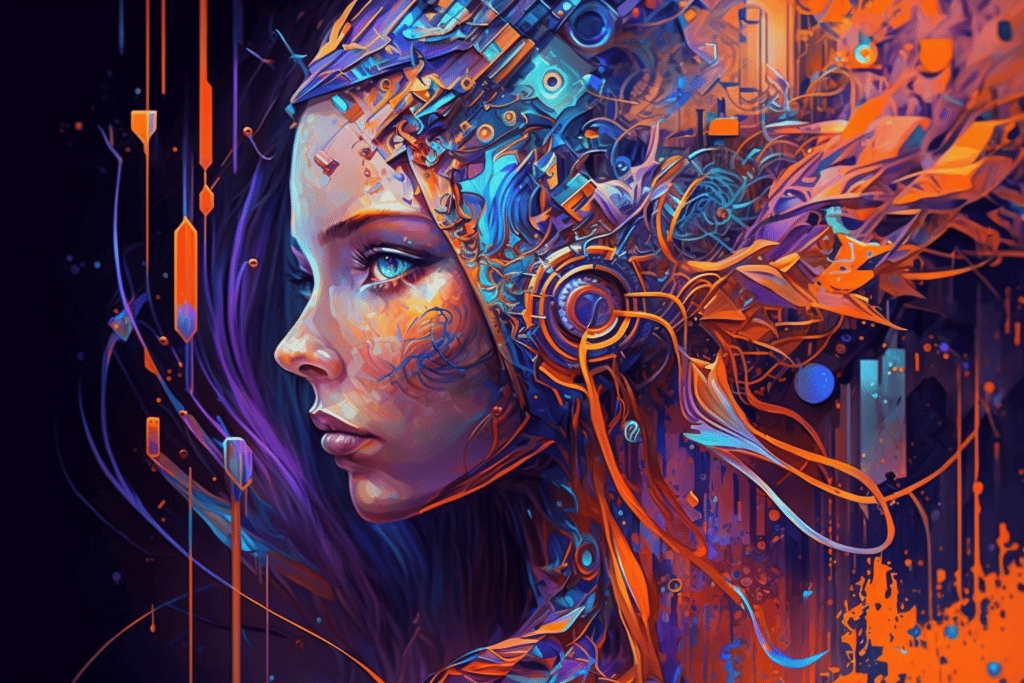Creative Collaboration: How Technology is Fostering New Forms of Artistic Expression
Technology has revolutionized the art world, opening up new avenues for artistic expression and pushing the boundaries of creativity.

Art has always been influenced by advancements in technology throughout history. In recent years, several new technologies have emerged that are impacting the art world in various ways.
Here are some of the main ways art has been steadily changing:
**** Artificial Intelligence ****
Virtual art is transforming the art world by offering immersive and interactive experiences that transcend physical limitations. Artists can create virtual environments and installations that engage viewers in entirely new ways. It expands the possibilities for storytelling and allows for dynamic and ever-evolving artworks that can be experienced from anywhere in the world. Virtual art challenges traditional notions of space and medium, pushing boundaries and redefining the relationship between the artist, the artwork, and the audience.
**** Digital Art ****
Digital art is revolutionizing the art world by breaking down barriers of accessibility, allowing artists to reach a global audience and showcase their work online. It provides new mediums for artistic expression, enabling artists to explore and experiment with limitless possibilities. Additionally, digital art blurs the boundaries between art forms, merging technology with traditional techniques, creating immersive and interactive experiences for viewers.
**** Virtual Reality ****
Virtual art is transforming the art world by offering immersive and interactive experiences that transcend physical limitations. Artists can create virtual environments and installations that engage viewers in entirely new ways. It expands the possibilities for storytelling and allows for dynamic and ever-evolving artworks that can be experienced from anywhere in the world. Virtual art challenges traditional notions of space and medium, pushing boundaries and redefining the relationship between the artist, the artwork, and the audience.
**** 3D Printing ****
Virtual art is transforming the art world by offering immersive and interactive experiences that transcend physical limitations. Artists can create virtual environments and installations that engage viewers in entirely new ways. It expands the possibilities for storytelling and allows for dynamic and ever-evolving artworks that can be experienced from anywhere in the world. Virtual art challenges traditional notions of space and medium, pushing boundaries and redefining the relationship between the artist, the artwork, and the audience.
Enjoy These Interesting Facts About Art + Technology:
(1) Leonardo da Vinci's "Vitruvian Man" is a famous example of the early relationship between art and technology. Created around 1490, the drawing demonstrates da Vinci's study of human proportions and symmetry, combining art and scientific principles.
(2) The first computer-generated artwork dates back to 1963 when computer scientist Kenneth Knowlton created a series of digital images using a computer and a plotter. The artwork titled "Studies in Perception I" was generated using algorithms and mathematical calculations.
(3) The term "computer art" was coined in the early 1960s to describe artwork created using computers. It marked the beginning of artists using digital tools and programming languages to create visual art.
(4) In 1984, artist Harold Cohen created an artificial intelligence program called AARON, which could generate original artwork. AARON's algorithm enabled it to create abstract compositions and landscapes, making it one of the earliest examples of AI-generated art.
(5) The introduction of Adobe Photoshop in 1988 revolutionized the way digital images are edited and manipulated. It has become a widely used tool for artists and photographers, allowing them to enhance and alter images in ways that were not possible with traditional techniques.
(6) The first 3D-printed artwork to be displayed in a major museum was a sculpture titled "DiDi," created by artist Janne Kyttanen in 2000. This marked a significant milestone in the use of 3D printing technology in the art world.
(7) The art installation "Rain Room" by Random International gained significant popularity in recent years. It uses motion sensors and a network of overhead sprinklers to create a responsive environment where rain stops falling wherever visitors move, creating an immersive and interactive experience.
(8) Virtual reality (VR) art experiences have gained traction with the development of accessible VR headsets. Artists can create virtual worlds and immersive experiences that allow viewers to interact with and explore art in entirely new ways.
(9) The art market has been impacted by blockchain technology, which provides a decentralized and transparent system for verifying authenticity, tracking provenance, and securely selling digital artworks. This technology has opened up new opportunities for artists and collectors to engage in the digital art marketplace.
(10) Social media platforms like Instagram have become significant platforms for artists to share their work and gain exposure. Artists can connect with a global audience, collaborate with other creators, and even sell their artworks directly through these platforms.

